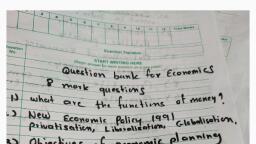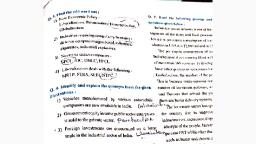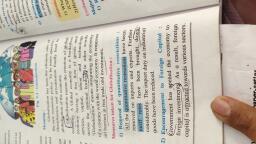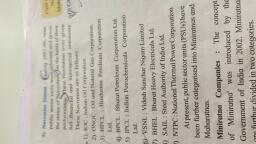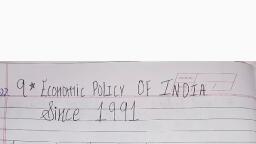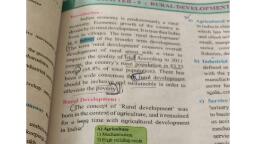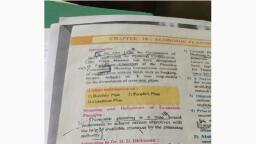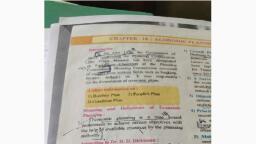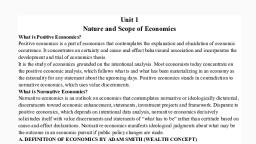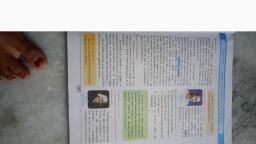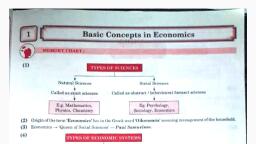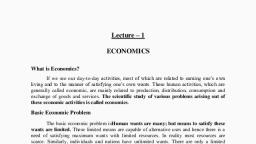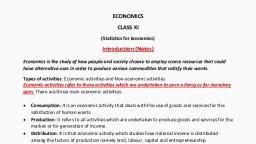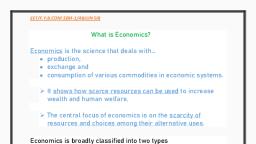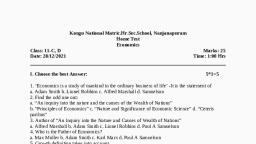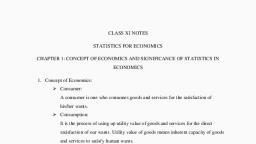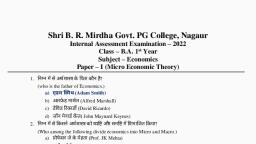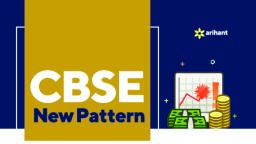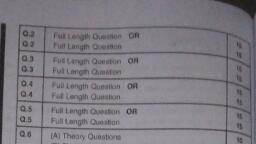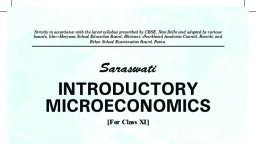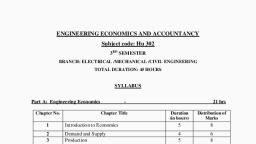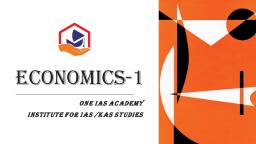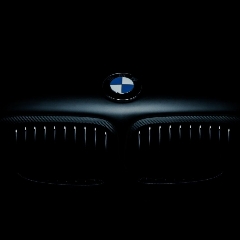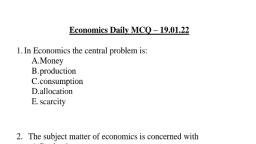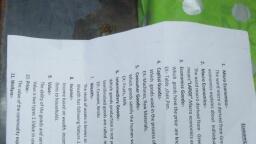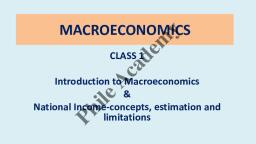Page 2 :
is most famous for his 1776 piece of work, "An, Inquiry into the Nature and Causes of Wealth of, Adam Smith defines Economics as "a, , science of wealth”, , Nations!, , Key-painty of Adam Smith's definition, 1) Laissez faire ic. non-intervention of the, government., 2) Capital and wealth accumulation, 3) Nature's law in economic affairs,, 4) Division of labour as an aspect of growth, theory, , Do you know?, , won Nobel Memorial Prize in Economics, for 2018, Paul Romer tends to be described, _ 48.0 growth theorist whereas Mr. Nordhaus, thas remarkably contributed to the ficld of, Environmental Economies,, , Find out: Other Nobel Paige Widnes in Economie, , 2) Prof, Alfred Marshall's Welfure-Orlented, Definition of Feanemics, Neo-classical co, vf Alfred Marshall, given the welfare-oriented, definition of Economics, in, the book entitled "Principles, which, 1890,, , mist, hay, , of Economics", , Tots published in, Aifved Marval ge, , was, His, finition states, "Eoonomics is a study of mankind in the, ondinary business of life. It examines that part, of individual and social action, which is closely, connceted with the attainment and use of, material requisites of well-being”, Key-points of Marshall's definition, , 1) Study of an ordinary man, , 2) Economics is a behavioural scicnee, , 3) Study of material welfare., , 4) Economics is not simply a study of wealth, , Definition of Economies, This is the most popular, , definition of, , Robbins, — in, entitled, "An Essay on the, Nature and — Significance, Vig tA of Se oe”, Lionel ohbiny published in 1932 mentions, , Economic, , about the seareity-oriented dh ition of, Economics, , "Economics is a science which studies, human behaviour as o relationship between ends, , and scarce means which have alternative uses’, Key-points of Rebbiny’ definition, , 1) Wants (ends) are unlimited., , 2) Means are comparatively limited, , 3) Wants are gradable on the basis of priority, , 4) Mcans have alternative uses., , Adam Smith,, David Ricardo,, J.S. Mill,, , T_R Malthus ete., Alfred Marshall,, A.C. Pigou,, Irving Fisher ete,, , Classical School, of Thought of 18°, century, , , , Neo-classical, School of Thought, of 19 and I*half, of 20" century, Modern School of, Thought from 20", century till date., , , , 1M. Keynes,, Lionel Robbias,, Poul Samuelson ete, , , , , , , , , , & sof Eo, in 1933, Sir Ragnar Frisch coined the terms, , Micro Economics and Macro Ecc, , terms are derived from the Greek w, , and ‘Makros’ respectively, , nomics ;, , ) Micro Economies, Micro means small. Micro Economies deals, with the behaviour of the individual variables, , such ay a houschold, worker, firm, industry cte, , Sh, , Snel adel
Page 3 :
fancth Houlding’s Definition of Micro, , ‘comomics, , "Micro Economies is the study of particular, firms, particular houscholds, individual prices,, wages, incomes, individual industries, particular, commoditics”,, , ‘oncepts of Micro Economics, Want, words In common language (want can be referred, , It is difficult to dgfine ‘want’ in few, , toay anced. In cconomics, want denotes a feeling, of ‘lack of satisfaction’, This cling enables the, individual to satisfy his oa, Human wants have grown in number for, two basic reasons, * Desire for better living duc to inventions and, innovations, * Rise in population,, , acteristics of wants, , ) Wants are unlimited N&gnts not only ari, , again and again but they are also unending.), , If one want gets satisficd, another arise, Wants goof titiltiplying in. numby, , i) Wants are recurring in nature SSeveral, , human wants éécur again and pn hile, some might be only occasional, , Roun Cte ed, , 1S: Age and Wants - a, b, €, , ) Mants differ with age : Wants and their, satisfaction differ as per the chronological, , fage. (Fig. 1.5 a, b,c}, v) Wants differ with gender Sa cad, worn want differéht goods acconding to, , Waits differ due vo preference ndvidel, habits, tastes and preferences maticr a lot, , while deciding wants of the people », , Fig. 1.6: Seasons and Wants, , 3, , Snel adel
Page 4 :
peWents differ with seasons (on kecpon human wo ‘Of wont sat, , changing with scasons (Fig ,1.6). ) covey iGealed wit), , ture : Differences 4) Value > Value has two approaches in, in culture i ants that are related to economics, ic. ‘aluc-in-use’ and ‘value in, food, dressing Ay le exchange’., , * Value-in-use : Ii refers to the worth of o, Gwehinen, , commodity. In simple words,, of a commodity, c.g. no une has to pay, price for sunshine but its immense worth, for life can never be doubted. In economic, language, sunshine has w high yahuc-in-wse, itis an example of free guns!, , Non-ceond, , be poking monctary, , payment fort ir, sun shine ete, , Value-in-exehange :(tt reftrs to the worth, of a commodity or a service expressed in, terms of another commodity. When this, Individual W value is expressed in terms of money, it is, called price of a commodity. A good which, commands a price is termed as an ‘cconumic, quod’, e.g. TV crc), , judge wearing hi, , Collective want, there is cobleetiy, travelling by tra, , @ igh valuc-in-wse, water, whereas, , ¢g washing, mixer, presgure cooker cte, Luxus those wants which arc me, for pleaktke and cajoyment, cg. AC-chr, well-fufmshed house ete Fig, 1.7: Water-Diamend Parades, 2) Goods and Services = These are pupular terms, of ccagomies, Find ows : F, . Soin that satisfics human wants ix "Which of the following is “free good’ en, armed as a goo! [thas material existence, "economic good"?, e.g chalk used by a teacher Wastin jeer, Services also satisfy human wants but do not -# Oxygen cylinder, , have any material existence, ¢.g “Toaching!, Sunshine, , offered by the teacher. Z a :, , 1) Luitity Fapacity of S commodity to satisfy g aip, , Sh, , Sn El Lanna)
Page 5 :
§) Wealth : Wealth refers to “anything which has, market value thd can be exchanged for mor, , To be regarded as ‘wealth’, a commodity, must possess the following characteristics ;, , ) Utility, , _—t Scarcity after, — itty Transferability tax, W, , Ivextermapty, i) Utility : ( commodity must kave the capacity, to. satisf¥~ human wants, }.g. furniture,, refrigerator cfs, Scarcity ( A commodity must bg scarce in, supply in reTation to its demand \if it is to, in the term ‘Wealjh’, c.g. all, economic goods price is paid., Transferability \_A commodity should be, transferable fram person to person as well, as place to placy. If the good is material or, tangible then only it is possible to transfer, , it from place to place, c.g yohicke jewellsry, , ete, , iv) Externality . can) be transferred, only if it is external to human body, e.g. bag,, chair cte ), , Physical transferability - This is actual, transfer of goods from one person to another, and from one place to another, ¢.g. vehicle., , Notional Transferability - It is not possible, to transfer the good physically but there can, be only transfer of ownership rights, c.g. land, , Sh, , Shaikh Fal, , wv, , Raise Hand Audio only
